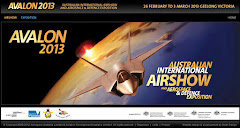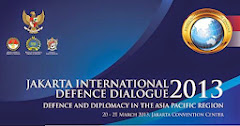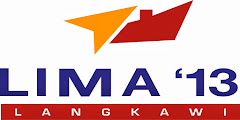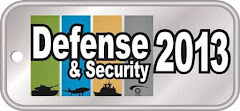HTMS Ang Thong 791, Endurance class LPD, 7.600 tonnes displacement, made by Singapore Technologies Marine (photo : Gwynn Angkul)
As Indo-Pacific nations build up their naval power, submarines, cruise missiles, aircraft carriers, jets, and frigates get the most attention. However, an underreported but significant regional trend over the last five years is widespread interest in amphibious capabilities.
Japan and Australia have created rudimentary amphibious forces, and New Zealand is working to develop one. Malaysia has publicly stated it wants a Marine Corps and even the small, remote Maldives has established a Marine Corps.
Apart from this, Asia also already has a number of Marine Corps or amphibious-capable ground forces. The ROK Marine Corps is one of the oldest and most capable, though largely tied to the Korean peninsula. The Chinese People’s Liberation Army (PLA) has a large Marine Corps, and as the PRC pursues its territorial expansion strategies it understands the value of amphibious forces and is rapidly building new amphibious ships.
HTMS Sichang 721, Normed PS 700 class LST, 4.520 tonnes displacement, made by Italthai Marine and Bangkok Dock (photo : mdc)
The Indonesian Marine Corps is expanding, while the Philippine Marines are working to upgrade their force. India has amphibious-capable forces, even though they lack adequate funding and focus, and Singapore is looking to improve its amphibious capabilities. Bucking the trend, the competent Taiwan Marines have been pared down in recent years – to the point where they may eventually be ineffective.
The Royal Thai Marine Corps (RTMC) has a long history and can conduct amphibious operations. It has performed superbly in the south against separatist insurgents, and made important contributions to winning the nearly 30-year long Communist insurgency. However, the RTMC can make even greater contributions to Thailand’s national security and to regional security as well. The RTMC is indeed a neglected strategic asset, but to understand why, one first must understand why amphibious capabilities are important.
HTMS Surin 722, Normed PS 700 class LST, 4.520 tonnes displacement, made by Italthai Marine and Bangkok Dock (photo : US Navy)
........
The Thailand Case
As much as any country in Asia, Thailand needs an amphibious capability of the sort provided by the RTMC and Royal Thai Navy (RTN). A 2,800 km coastline cries out for such an amphibious force. But beyond a long and vulnerable coastline, Thailand has maritime interests such as offshore oil platforms, fisheries, and sovereignty to protect in the Andaman Sea and the Gulf of Thailand.
The RTMC is a 20,000-Marine force operating as part of the Royal Thai Navy (RTN). Despite being heavily involved in ground operations in southern Thailand against separatist insurgents, the RTMC maintains an amphibious capability centered on a 2,400 Marine amphibious unit. It is able to conduct simple company-sized landings using LCUs and AAVs, rubber boats, and helicopters launched from RTN amphibious ships.
RTN operates 2 Marsun M-55 class LCU, 550 tonnes displacement, made by Marsun Shipbuilding (photo : shipbucket)
Although RTMC has a close relationship with the Royal Thai Navy, priorities differ. Most importantly, while amphibious operations are RTMC’s highest priority, the RTN focuses more on combatant ships, missiles, submarines, and anti-submarine warfare. These divergent priorities manifest themselves in budget allocations, and not surprisingly, RTMC is chronically short of funds.
This is a particular issue when it comes to AAVs (Amphibious Assault Vehicles) – the backbone of RTMC ship-to-shore amphibious capability. These aging vehicles require constant upkeep, which requires money, and also need regular training with RTN ships to use efficiently – which also costs money.
The Thai Marines have a good internal amphibious training scheme and send officers to U.S. Marine Corps schools in the United States. The two services also train together at the Cobra Gold and CARAT amphibious exercises each year.
RTN operates 3 Mannok class LCU, 550 tonnes displacement, made by Silkline International - Australian Submarine Corporation (ASC) Joint Venture (photo : defense arab)
The RTMC resembles the U.S. Marines in many respects, but unlike the USMC it lacks its own aviation element and depends on RTN and Royal Thai Air Force to provide helicopter and other air support. This is a shortcoming, as aviation is particularly important in amphibious operations because it expands range and options for moving troops and equipment to/from shore beyond what boats and other watercraft can provide
.
Properly considered, RTMC is an integral part of the Royal Thai Armed Forces overall capability. The Thai Marines give the historic steward of Thailand’s national defense (the Royal Thai Army) a more capable total force that can handle all contingencies – particularly those requiring operations at sea and ashore.
RTN operates 4 Thongkaeo class LCU, 396 tonnes dispacement , made by Bangkok Dock (photo : Stephane Barbedienne)
As a yardstick, one might fairly ask how well the Thai Armed Forces would respond to another major tsunami or typhoon in southern Thailand or the Andamans, or to a threat to Thailand’s islands or gas facilities in the Gulf of Thailand. Would the current Thai amphibious capability be sufficient to achieve success? If not, what would be the political impact on the current government? A fast, effective response enhances the armed forces’ image as evidenced by the praise the Royal Thai Armed Forces received from the Thai public during the 2011 floods. A fumbled response has the opposite effect.
Policy Recommendations
Based on my 30 years of Marine Corps experience and familiarity with a number of Marine Corps and amphibious forces in the Asia/Pacific region, I believe the RTMC/RTN has the expertise and hardware – amphibious ships, LCUs, AAVs – to conduct amphibious operations at the basic level that Thailand’s leaders currently require. However, to achieve a more effective capability, the following might be considered:
First, have RTMC and RTN conduct regular and more realistic amphibious training, including: planning, logistics, intelligence, communications, aviation operations, and maneuver and operations once ashore. The more one practices amphibious operations, the more one improves. And realistic training is most important. Avoid the “staged landings” that are done leisurely and according to a prepared script for VIP observers. These do little to improve capability.
RTMC operates 36 AAV-7A1 APC, variants include: AAVP-7A1, AAVC-7A1, AAVR-7A1.(photo : RTMC)
Second, expand RTMC capabilities to at least a battalion-sized landing capability. A company (about 200 Marines) is too few Marines to do much once ashore – even in an HA/DR environment, much less in combat.
Third, spend the money necessary to keep Amphibious Assault Vehicles (AAVs) operating. The technology may be decades old, but AAVs remain useful for ship-to-shore movement and operating in difficult terrain ashore. RTMC AAVs have proved their worth responding to flooding in Thailand. Also, during serious flooding in Taiwan in 2009, the Taiwan Marine Corps’ AAVs were the only vehicles able to access large parts of the flooded regions.
Fourth, create a Thai “MEU/ARG” by organizing Thai Marines and Thai Navy amphibious ships into a permanent task force – and then use it. Besides conducting domestic operations, participate with regional partners in training, exercises, and real world operations – especially HA/DR contingencies that routinely occur. Also, if Malaysia’s proposed ASEAN Ready Group gains momentum, the RTMC/RTN has a useful role to play. Importantly, a MEU/ARG need not have three amphibious ships like the US. One is enough – although two or three modern amphibious ships are desirable in Thailand’s case.
Some source said RTMC also operates 12 BTR-3E1 APC and 24 V-150 Commando (photo : pantip)
Fifth, establish a RTMC aviation support capability. Air operations are an essential part of amphibious operations. RTMC should develop an air component – either internally in the RTMC, or using Royal Thai Navy, Air Force, or Army aircraft that are permanently attached to the RTMC. Being able to smoothly integrate air operations into amphibious operations expands capabilities and improves overall competence.
Sixth and finally, enhance longstanding ties with U.S. Marines by assigning a RTMC Liaison officer at Marine Forces Pacific Headquarters in Honolulu, and assign a US Marine officer to the Royal Thai Marine Corps. There is no substitute for continuous personal interaction.
Some of these recommendations require more money to accomplish while others just need existing assets reorganized. However, all of them require recognition at the highest levels of the Royal Thai Armed Forces of the national benefits to be gained from a RTMC able to conduct effective amphibious operations.
The Royal Thai Marine Corps is already a capable force, but it has the potential to be a strategic-level national asset in support of Thailand’s national security. By implementing these recommendations, the benefits will go beyond the RTMC itself. Improving RTMC and RTN amphibious capability in turn bolsters the Royal Thai Armed Forces’ overall ability to defend the nation’s sovereignty, protect its citizens, and engage with regional neighbors. As important, as ASEAN works towards economic integration and takes further steps towards defense and security cooperation, Thailand’s enhanced amphibious capability will allow it to visibly contribute to ASEAN security – with the political benefits that accrue to Thailand from such activities.
See full article The Diplomat


















They are also developing Thai made AAV by DTI http://4.bp.blogspot.com/-JHmF27HpzKY/VfmZmvMs2XI/AAAAAAABLmk/--sb73Jg4P8/s1600/150908181709_0DTI006.JPG
BalasHapusThey are also developing Thai made AAV by DTI http://4.bp.blogspot.com/-JHmF27HpzKY/VfmZmvMs2XI/AAAAAAABLmk/--sb73Jg4P8/s1600/150908181709_0DTI006.JPG
BalasHapus